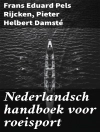‘For most men, as Epicurus has remarked, rest is stagnation and activity madness. Mad or not, the activity that I have been pursuing for the last twenty years takes the form of voyages to remote, mountainous regions.’
H.W. ‘Bill’ Tilman’s fourteenth book describes three more of those voyages, ‘the first comparatively humdrum, the second totally disastrous, and the third exceedingly troublesome’.
The first voyage describes Tilman’s 1971 attempt to reach East Greenland’s remote and ice-bound Scoresby Sound. The largest fjord system in the world was named after the father of Whitby whaling captain, William Scoresby, who first charted the coastline in 1822. Scoresby’s two-volume Account of the Arctic Regions provided much of the historical inspiration for Tilman’s northern voyages and fuelled his fascination with Scoresby Sound and the unclimbed mountains at its head.
Tilman’s first attempt to reach the fjord had already cost him his first boat, Mischief, in 1968. The following year, a ‘polite mutiny’ aboard Sea Breeze had forced him to turn back within sight of the entrance, so with a good crew aboard in 1971, it was particularly frustrating for Tilman to find the fjord blocked once more, this time by impenetrable sea ice at the entrance.
Refusing to give up, Tilman’s obsession with Scoresby Sound continued in 1972 when a series of unfortunate events led to the loss of Sea Breeze, crushed between a rock and an ice floe.
Safely back home in Wales, the inevitable search for a new boat began. ‘One cannot buy a biggish boat as if buying a piece of soap. The act is almost as irrevocable as marriage and should be given as much thought.’ The 1902 pilot cutter Baroque, was acquired and after not inconsiderable expense, proved equal to the challenge. Tilman’s first troublesome voyage aboard her to West Greenland in 1973 completes this collection.
Sobre el autor
Trevor Robertson has spent the vast majority of his life at sea. Much of his sailing, almost 200, 000 miles, has been to places like Antarctica, Greenland, Patagonia, and Labrador including two winters spent, aboard his self-built gaff-rigged cutter Iron Bark, in Arctic and Antarctic anchorages.











